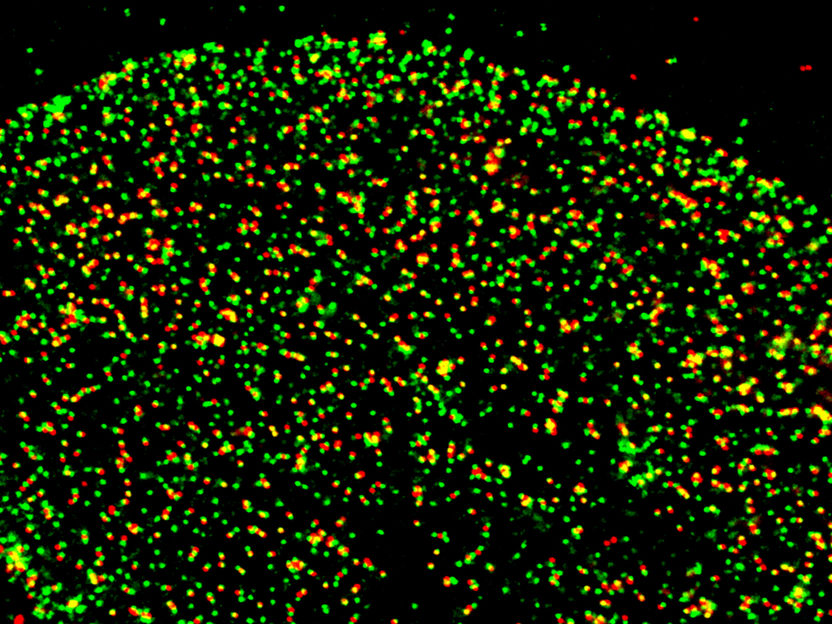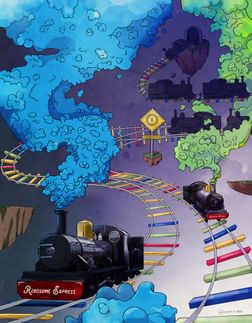Newly Discovered Protein Gives Signal for Virus Infection
Advertisement
Researchers at the University of Zurich have discovered a protein that enables adenoviruses to infect human cells. The Mib1 protein gives the virus the signal to uncoat the DNA and release it into the nucleus. Blocking this protein could therefore help people with weakened immune systems to fight dangerous viruses.

Without the signal to uncoat their DNA, the adenoviruses (red) are stopped at the nuclear pore complexes of the human cell (green).
Michael Bauer, UZH
Viruses have been part of animals and humans for eons. When viruses invade a cell, they can infiltrate the nucleus with their genome and become part of the genome of the infected organism. Viruses transfer their genes between various organisms, as well as between tissues containing well differentiated cells inside a living creature. But how they uncoat their well-packed genes and release them to cause infection is largely unknown.
Mib1 protein systematically controls virus infection
The research group of Urs Greber, professor at the Institute of Molecular Life Sciences of the University of Zurich (UZH), has now for the first time identified a protein in human cells that is key for successful viral DNA uncoating: the ubiquitin-ligase Mind bomb 1 (Mib1). “The protein enables adenoviruses to uncoat their DNA and discharge it into the nucleus – which is necessary for successful infection,” says Greber. If the protein is not produced or fails to work properly, the viruses can penetrate into the cell and reach the nuclear membrane, but they remain stuck on the porous structures of the nuclear envelope. “This finding opens up a new possibility for developing anti-viral therapies that block Mib1 in well differentiated cells,” says Greber. At present, there are no effective drugs to combat these widespread viruses.
Looking for door handle at nucleus entrance
Researchers found the protein by switching off most of the genes in human cells of the lung epithelium using RNA interference one by one, and then testing whether adenoviruses could infect the cells. “When we inhibited the gene for Mib1 or knocked it out using CRISPR-Cas technology, the virus infection rate declined drastically. Practically all adenoviruses remained stuck at the pore structures outside of the nucleus,” says Greber. As soon as these cells, after genetic interventions, produced small amounts of Mib1 again, the Mib1 reached the viruses at the nuclear pores, and the viruses uncoated their genes and infected the cells.























































